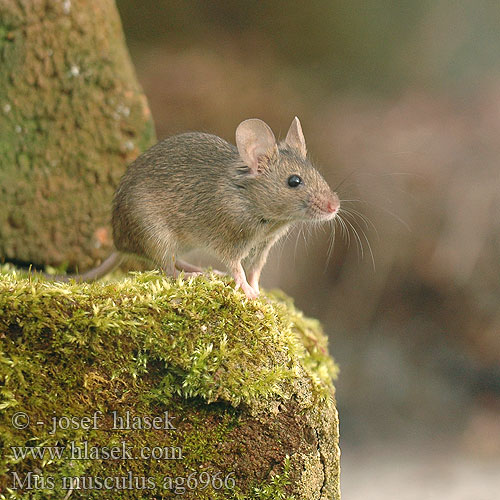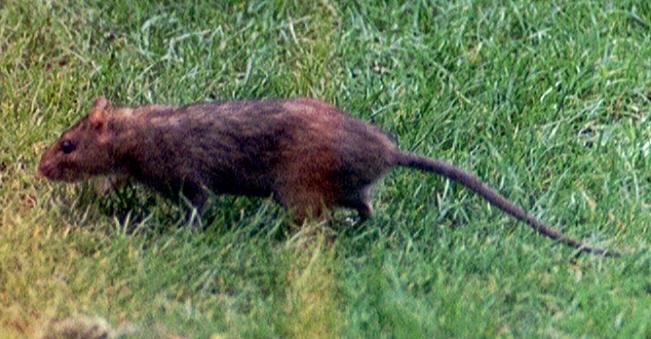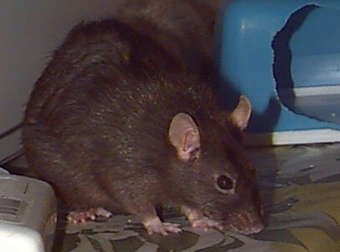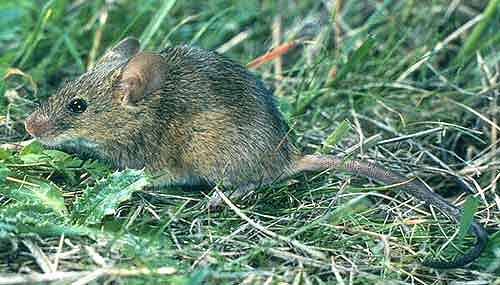Rats and Mice
Common Rat (Rattus Norvegicus)
Rats are the one rodent which most people can not abide. They damage goods and property and carry disease including Leptospirosis, otherwise called Weil’s Disease (pronounced Veil’s). This disease is transmitted to humans in the urine of infected rats. It is usually associated with watercourses, sewage systems and even damp soil where there is an infestation of rats. Other diseases associated with rats are salmonella and the less common rat-bite fever and typhoid. Parasites caused by rodents include, ringworm, roundworm, tapeworm, ticks and fleas.Life and breeding cycle of rodents is as follow:- In the wild, the average life span of a rat is one year. Gestation period for a rat is three weeks, the female rat can give birth to about 20 young a year (4-6 at a time) if she lives that long!! The young are weaned at 4-5 weeks, at 3 months old they are ready to start breeding!! All rodents have a pair of upper and lower teeth called Incisors. They do not have roots, and they never stop growing throughout its life!! If they were left to grow and were never worn down they would grow into the rodents brain!! They would also starve to death. To keep these teeth worn down they grind them together and gnaw on anything they can, including gravel. Rodents teeth are harder than Lead, Aluminium, Copper and iron. rats can gnaw through wood, all metal pipes, sheet metal, exposed edges of glass and electric cables which can cause serious fire hazards.
Control - Identify harbourages, effect proofing to doors and holes in building fabric. Identify defective drains/sewers and possible access via services. Remove attractive foodstuffs, locate perimeter baits or internal baits to effect control. Contact dust can be applied to ducting's and harbourages only when safe to do so. Live and break back traps can be sited and sticky boards are sometimes used but are are not generally effective for best control.
House Mouse (Mus musculus)
Identification - It is a small mammal and a rodent. The house mouse has a shorter tail than other mice, it is very variable in colour, being grey, brown or almost black and normally the species has a grey belly. Weight; 15g (0.5 oz) Length; 6 - 9 cm head and body, tail; 10 cms, ears; large, eyes; small, snout; pointed. It has a wide range of habitats - all buildings coalmines to tower blocks, food factories, shops, to abattoirs. gestation is 21 days. Weaning 3 to 4 weeks. Sexual maturity; 9 - 10 weeks. Litter size; 4 - 16. Litters per year; 7 - 8. Lives 9 - 12 months. A mouse weighs 1g at birth and is the size of a baked bean.
Control - Identify harbourages, effect proofing to doors and holes in building fabric. identify defective access routes via services. Remove attractive foodstuffs, control waste and locate baits to effect control. Contact dust can be applied to ductings and harbourages only when safe to do so. break back traps can be sited and sticky boards are often used as a last resort. bait shyness and marked behavioural changes are often reported with bait box and bait shyness.
Me and the House Mouse





